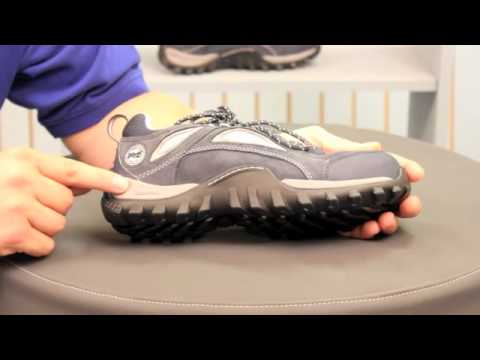
This post may contain affiliate links which means I may receive a commission for purchases made through links. Learn more on my Private Policy page.






Price: $39.99
(as of Mar 29, 2023 07:57:07 UTC – Details)
Outline:
1. Introduction
2. Understanding Plantar Fasciitis
3. Symptoms of Plantar Fasciitis
4. Causes of Plantar Fasciitis
5. Risk Factors for Plantar Fasciitis
6. Treatment Options for Plantar Fasciitis
7. Orthotic Inserts for Plantar Fasciitis
8. Types of Orthotic Inserts for Plantar Fasciitis
9. Benefits of Orthotic Inserts for Plantar Fasciitis
10. Factors to Consider When Choosing Orthotic Inserts for Plantar Fasciitis
11. How to Use Orthotic Inserts for Plantar Fasciitis
12. Precautions When Using Orthotic Inserts for Plantar Fasciitis
13. Frequently Asked Questions (FAQs)
14. Conclusion
Introduction:
Plantar Fasciitis is a common medical condition that affects the feet, particularly the heel region. It is characterized by inflammation of the plantar fascia, a band of tissue that runs along the bottom of the foot from the heel to the toes. The condition can cause significant pain and discomfort, making it difficult for individuals to walk or stand for extended periods. However, with proper treatment and management, it is possible to alleviate the symptoms of Plantar Fasciitis and improve mobility. This article explores the use of Orthotic Inserts as a treatment option for Plantar Fasciitis.
Understanding Plantar Fasciitis:
Plantar Fasciitis is a medical condition that affects the plantar fascia, a thick band of tissue that runs along the bottom of the foot. The plantar fascia connects the heel bone to the toes, providing support to the arch and aiding movement. When the plantar fascia is subjected to excessive stress, it can become inflamed, leading to pain and discomfort. The condition is more common in individuals who engage in activities that involve prolonged standing, walking, or running.
Symptoms of Plantar Fasciitis:
The hallmark symptom of Plantar Fasciitis is heel pain, especially when taking the first steps in the morning after waking up. The pain can also occur after prolonged sitting or standing, making it difficult to engage in physical activities. Other symptoms include stiffness, tenderness, and a burning sensation in the affected area.
Causes of Plantar Fasciitis:
Plantar Fasciitis is caused by repetitive stress and strain on the plantar fascia, leading to small tears in the tissue. Certain factors can increase the risk of developing Plantar Fasciitis, such as:
– Obesity or being overweight
– Wearing shoes with inadequate arch support
– Having high or low arches
– Engaging in activities that involve prolonged standing, walking, or running
– Being between the ages of 40 to 60 years
Risk Factors for Plantar Fasciitis:
Several factors can increase the risk of developing Plantar Fasciitis, such as:
– Age: individuals between 40 to 60 years are more prone to developing the condition.
– Obesity: excess weight can increase stress on the feet, leading to plantar fascia strain.
– Footwear: wearing shoes with inadequate arch support or cushioning can lead to plantar fascia strain.
– Foot structure: individuals with high or low arches are more susceptible to developing Plantar Fasciitis.
– Certain activities: engaging in activities that involve prolonged standing, walking, or running can lead to plantar fascia strain.
Treatment Options for Plantar Fasciitis:
The treatment for Plantar Fasciitis depends on the severity of the condition. Mild cases may require rest, ice, compression, and elevation of the affected foot. Physical therapy, stretching exercises, and the use of over-the-counter pain medications can also help alleviate symptoms. For more severe cases, doctors may recommend orthotics, such as insoles, braces, or shoe inserts.
Orthotic Inserts for Plantar Fasciitis:
Orthotic Inserts are custom-made or pre-made shoe insoles that are designed to provide support and cushioning to the feet. Orthotic Inserts can be used to treat several foot conditions, including Plantar Fasciitis. The inserts help support the arch and provide cushioning to the heel, reducing the stress on the plantar fascia.
Types of Orthotic Inserts for Plantar Fasciitis:
There are several types of Orthotic Inserts available for Plantar Fasciitis, such as:
– Arch Support Insoles: These inserts provide support to the arch of the foot, reducing strain on the plantar fascia.
– Gel Insoles: These inserts provide cushioning and shock absorption to the heel, reducing the impact of each step.
– Athletic Insoles: These inserts are designed for use during physical activities such as running or walking, providing support and cushioning to the feet.
– Orthotic Insoles: These are custom-made inserts that are designed specifically to fit the unique foot structure of an individual, providing maximum support and cushioning.
Benefits of Orthotic Inserts for Plantar Fasciitis:
Using Orthotic Inserts for Plantar Fasciitis can provide several benefits, such as:
– Pain relief: The inserts provide cushioning and support to the feet, reducing the strain and stress on the plantar fascia, leading to pain relief.
– Improved mobility: With reduced pain and discomfort, individuals can engage in physical activities more comfortably.
– Prevention of further injury: Orthotic Inserts can help prevent further damage to the plantar fascia by reducing stress and strain on the feet.
Factors to Consider When Choosing Orthotic Inserts for Plantar Fasciitis:
When choosing Orthotic Inserts for Plantar Fasciitis, it is essential to consider several factors, such as:
– Arch Support: The inserts should provide adequate support to the arch of the foot, reducing strain on the plantar fascia.
– Cushioning: The inserts should provide ample cushioning and shock absorption to the heel, reducing the impact of each step.
– Fit: The inserts should fit comfortably in the shoes, providing maximum support and cushioning to the feet.
– Material: The material used to make the inserts should be durable and long-lasting, able to withstand prolonged use.
How to Use Orthotic Inserts for Plantar Fasciitis:
When using Orthotic Inserts for Plantar Fasciitis, it is essential to follow these steps:
– Ensure that the inserts fit comfortably in the shoes
– Wear the inserts regularly, especially during activities that involve prolonged standing, walking, or running.
– Replace the inserts as needed to maintain optimal support and cushioning.
Precautions When Using Orthotic Inserts for Plantar Fasciitis:
When using Orthotic Inserts for Plantar Fasciitis, it is essential to take the following precautions:
– Follow the instructions provided by the manufacturer or health care provider.
– Do not use the inserts as a substitute for medical treatment.
– Consult a health care provider before using the inserts if you have any underlying medical conditions or allergies.
Frequently Asked Questions (FAQs):
1. Can Orthotic Inserts cure Plantar Fasciitis?
No, Orthotic Inserts cannot cure Plantar Fasciitis, but they can assist in reducing pain and discomfort.
2. Are Orthotic Inserts expensive?
The cost of Orthotic Inserts varies depending on the type and where you purchase them.
3. Can Orthotic Inserts be used for all types of shoes?
Orthotic Inserts come in different sizes and shapes; therefore, they may not fit all types of shoes.
4. How long do Orthotic Inserts last?
The longevity of Orthotic Inserts varies depending on the material and frequency of use. It is recommended to replace them every six to nine months.
5. Do Orthotic Inserts require breaking in?
Yes, Orthotic Inserts may need some time to adapt to your feet, so it’s important to gradually increase the wear time.
Conclusion:
Plantar Fasciitis is a common medical condition that can cause significant pain and discomfort. Taking preventative measures such as wearing Orthotic Inserts can help alleviate the symptoms of Plantar Fasciitis, thus improving mobility. It is essential to choose the right inserts for your feet, considering factors such as the level of arch support, cushioning, and fit. Follow the instructions provided by the manufacturer and consult with your healthcare provider before using Orthotic Inserts. With the right treatment and management, individuals with Plantar Fasciitis can improve their quality of life.
Custom Massage: Now Write An Article On This Topic “Plantar Fasciitis Arch Support Insoles for Men and Women Shoe Inserts – Orthotic Inserts – Flat Feet Foot – Running Athletic Gel Shoe Insoles – Orthotic Insoles for Arch Pain High Arch – Boot Insoles”.








